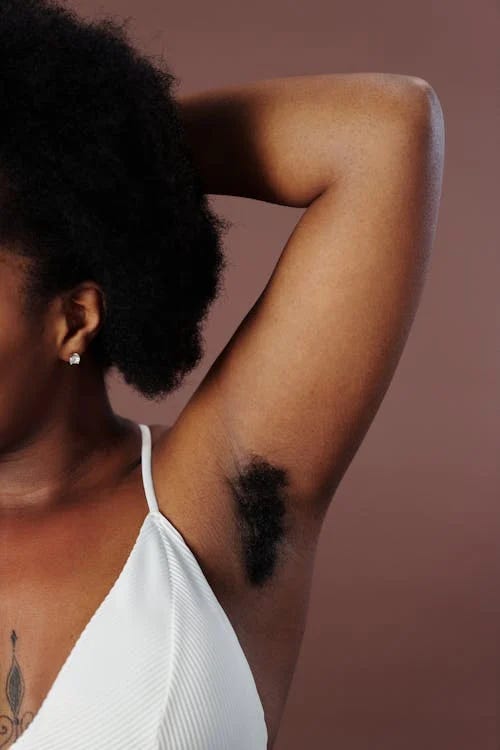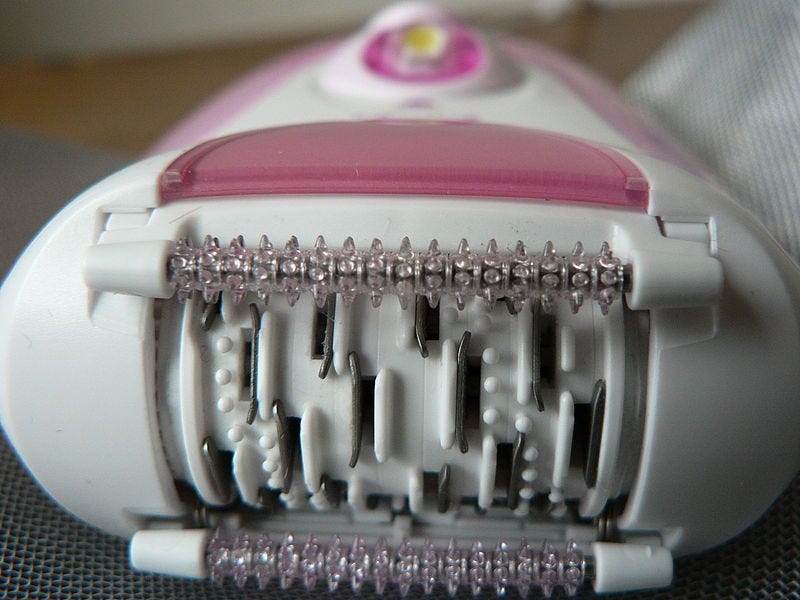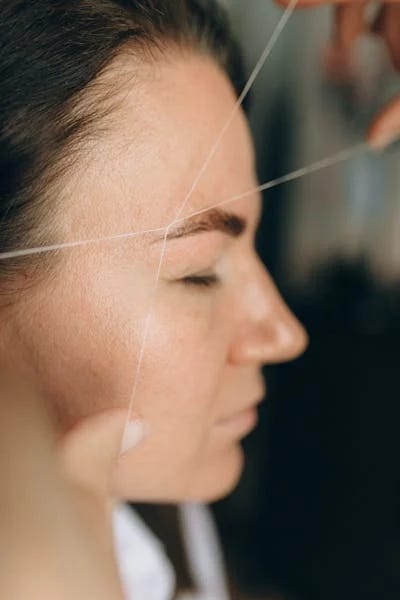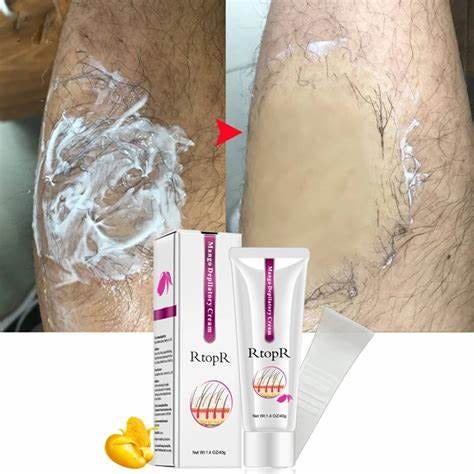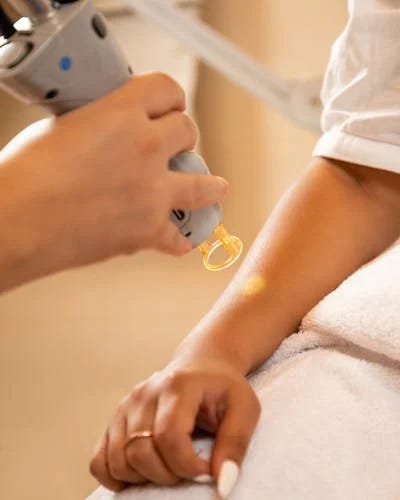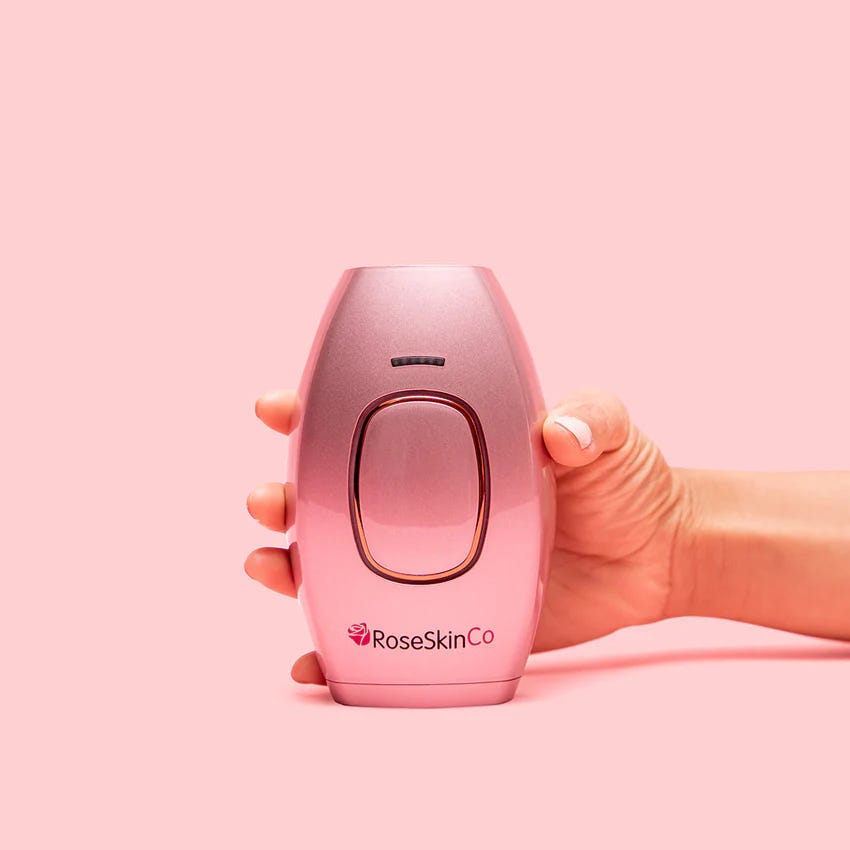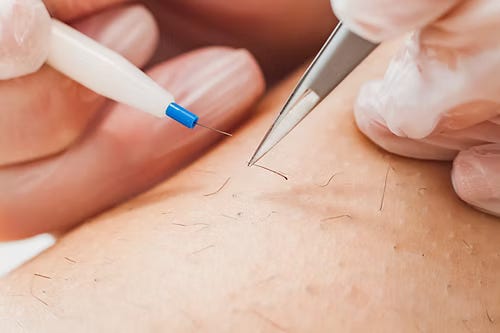Body hair is a perfectly, wonderfully natural occurrence… but if you're looking to live hair-free, it can be a pesky problem to tackle weekly or even daily. Fortunately, there are many options to get you smooth, ranging from at home to professional treatments. Choosing the right one depends on factors like your personal preference, skin sensitivity, budget, and time.
I'll explore the different methods available today, how well they work, and the pros and cons of each!
1. Waxing
Warm wax is applied directly to the skin, sometimes followed by a paper strip (quick note: when using hard wax, strips aren’t used), then quickly removed. It rips out hair at the follicle and results can last 3+ weeks.
A relatively quick and convenient process. Any area of the face or body can be waxed.
Pros:
Privacy: can be done at home.
Inexpensive whether DIY or at a salon.
Added benefit of removal of dead skin cells.
After prolonged treatments, hair will start to grow in finer.
Cons:
Pain. If unexperienced, skin can lift along with the hair.
Requires regular treatments, every 3-4 weeks.
Can cause sagging of skin over time.
Wax cannot be applied to compromised skin, such as if you have rosacea, eczema, psoriasis, sunburn, or acne. Also, not an option for anyone who has an auto-immune disorder or is currently taking blood thinners.
2. Epilators
Okay, up close, that’s a bit intimidating…
Epilators are electronic, handheld devices that act as tiny rotating discs or tweezers to pull multiple hairs out at once. It is similar to waxing where hair is pulled out at the root, but in smaller sections.
Pros:
Privacy: can be done at home.
Results can last for a few weeks.
Affordable: cost for a device starts at approx. $30.
Cons:
It’s about as painful as it sounds.
Skin may be temporarily inflamed after treatment.
Will not exfoliate the skin like waxing does.
3. Threading
Using centuries-old techniques, cotton or polyester thread is twisted and wound, then rolled over areas to target. Rows of unwanted hair are removed at a time, right at the follicle.
This method is precise enough for eyebrow shaping, making it an ideal option if that is what you’re seeking.
Pros:
Minimal irritation, great for those with sensitive skin.
Will not cause ingrown hairs.
Results last 3-6 weeks, depending on your hair growth cycle.
Cons:
Intended for facial hair, but can be performed on legs with patience.
Can be unsanitary if practitioner works by holding thread in their mouth (this is surprisingly common).
4. Depilatory Creams
You've probably heard of Nair, a popular brand amongst many currently on the market. The active ingredient in depilatory creams, Thioglycolic Acid, weakens the keratin protein of each hair so it essentially dissolves at the surface.
You simply apply the cream, wait anywhere between 3-10 minutes, and then remove with a damp towel. I recommend following with a shower using an unscented soap over the treated areas to avoid irritation.
Pros:
Privacy: can be done at home.
Pain free.
Affordable, with basic options ranging $5-10.
Sensitive skin formulas allow you to use this cream on face and bikini area.
Results are immediate and will last slightly longer than shaving.
Cons:
The smell is absolutely awful. Universally.
Improper use and leaving it on too long will result in chemical burns.
Cannot be applied to compromised skin, suck as if you have rosacea, eczema, psoriasis, sunburn, or acne. Also not an option for anyone currently using retinol products.
4. Laser Hair Removal
In LHR, the laser emits a single wavelength of light to precisely target pigment in the hair, effectively damaging those hair follicles with heat. Contrast is a must, as the laser will not recognize light hair, or dark hair against darker skin tones. If you're an ideal candidate, you can expect 90% reduction in hair growth once a course of treatment is completed.
All areas of the body can be treated over a period of time, but ongoing maintenance appointments will be necessary. Buyer beware: a hormonal event (pregnancy, birth control, PCOS, menopause, etc.) can trigger regrowth with a vengeance.
Pros:
Long term hair growth reduction.
Affordable packages typically offered at reputable med spas.
Cons:
Requires typically a minimum of 6 in-office sessions, on a specific schedule.
Pain is described as a rubber band repeatedly snapping over the skin.
Occasionally marketed as a permanent solution: it’s not.
Not every hair or skin color can be treated, nor can any areas with tattoos.
5. IPL (Intense Pulsed Light)
IPL is similar to laser in that it also emits wavelengths, however it is diffused over a larger area. I've talked before about how this is the least effective option for in office hair removal — mind you, in office is where you would receive the most powerful treatment. The at home devices will not deliver long-lasting results (no matter what that person on TikTok promises…)
IPL is much better used as its intended, in office, to treat skin tone and texture issues.
Pros:
Privacy: can be done at home.
Cons:
Pricy: devices range from $150-400
Pain level similar to Laser Hair Removal.
Ongoing treatments that require you to stick to a schedule.
Hair guaranteed to grow back.
6. Electrolysis
Not gonna lie — it’s the holy grail of hair removal.
Using short-wave thermolysis (heat), galvanic (heat and chemical), or a mix of both, electrolysis works by inserting a thin needle directly into the hair follicle. An electric current kills the follicle and the root, making regrowth impossible.
This is the only option that destroys (not just damages!) the hair follicle, which is why legally, it can advertise as permanent hair removal.
Pros:
The holy grail of hair removal.
Results are permanent.
Can treat any skin color, hair color, and can even be done over tattoos.
Ideal for those who suffer from PCOS.
Cons:
Treats one. hair. at. a. time.
Requires multiple treatments. Depending on the area, can easily take years before completed.
Pain is about a 3/10, but can be much worse depending on the provider, method, and aftercare.
Pricey. A one hour session typically averages $100.
When it comes to hair removal, there’s truly an option out there for everyone. There’s also nothing that says you can’t try and see what works out best for you!
Not sure where to go with your hair treatment journey? I’m happy to answer any additional questions or go over the aftercare of each process!





